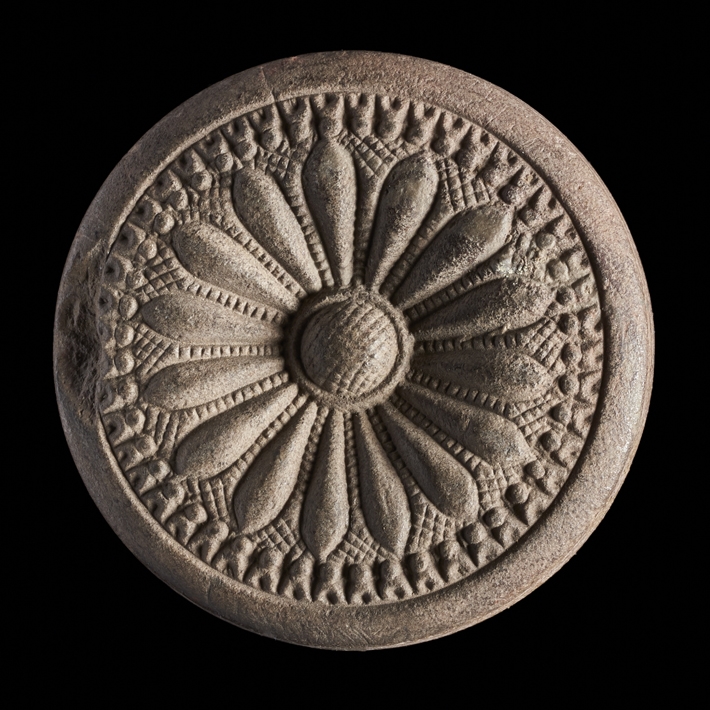26.Disc stone with lotus medallion

- 3rd–2nd century BCE
- Patna, Bihar
- Bihar Museum, Patna
These female clay figures emerge during a moment when northern India was reveling in its cosmopolitanism, built on trade, diplomacy, and marriage alliances under Mauryan rule. The refined and unparalleled style of the three figurines and their localized discovery point to them as objects of beauty for the enjoyment of an urban elite centered at the Mauryan capital of Pātaliputra.
Their designs incorporate honeysuckle and lotus, signs of auspiciousness and abundance. The Hellenized honeysuckle, introduced to India from Persia, had a popular local equivalent, the snake flower (nāgapuṣpa).

 Previous
Previous